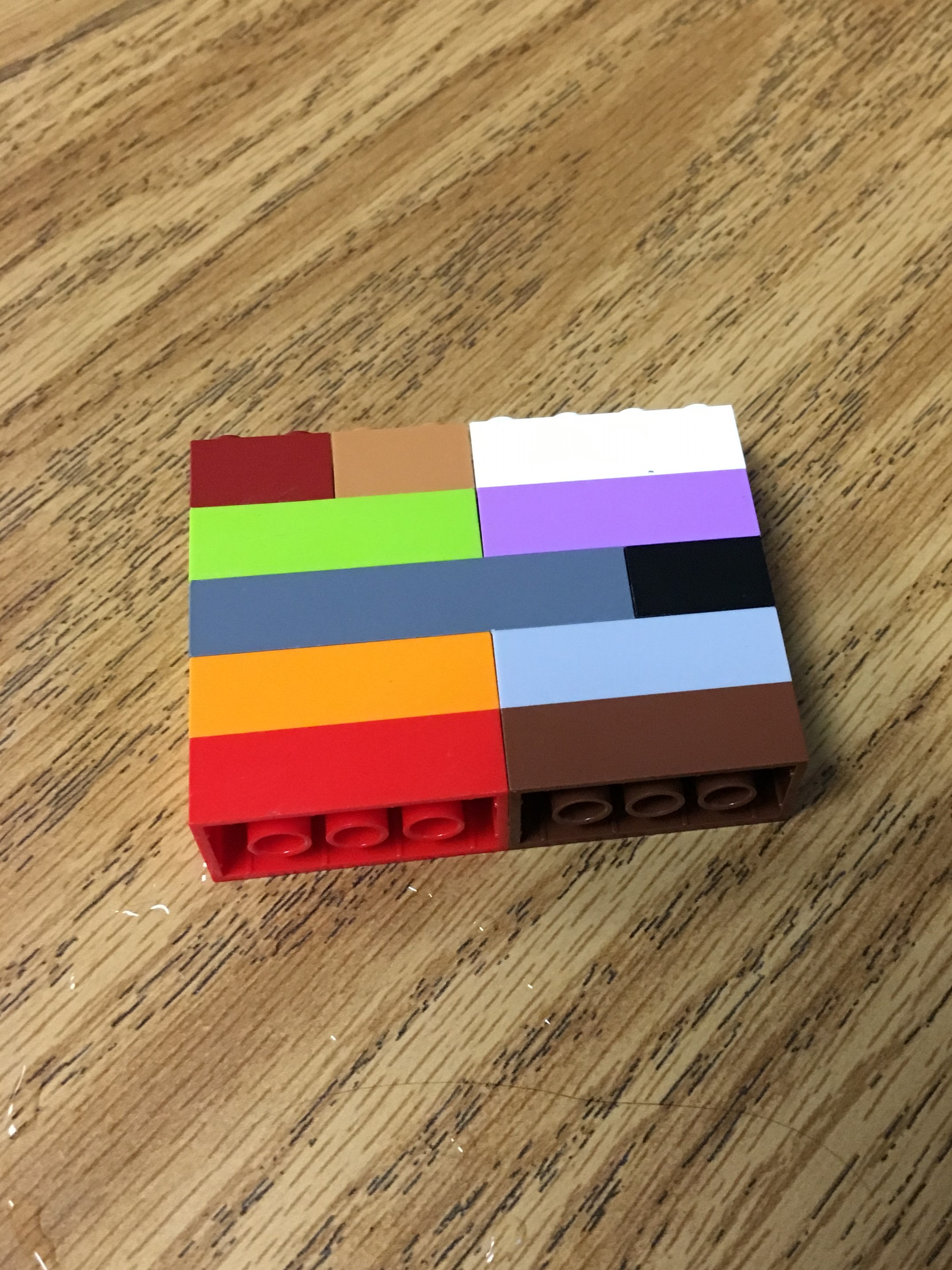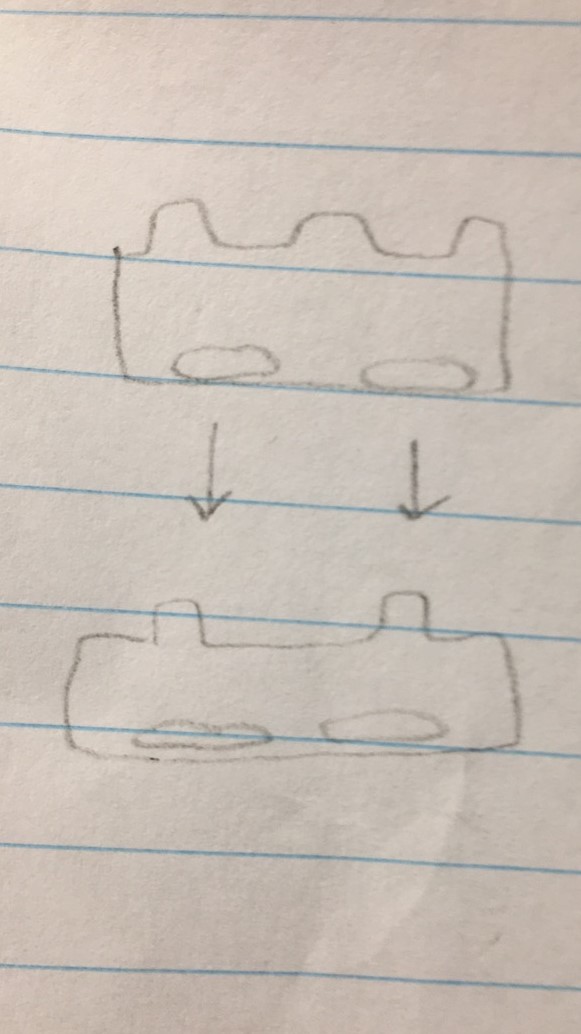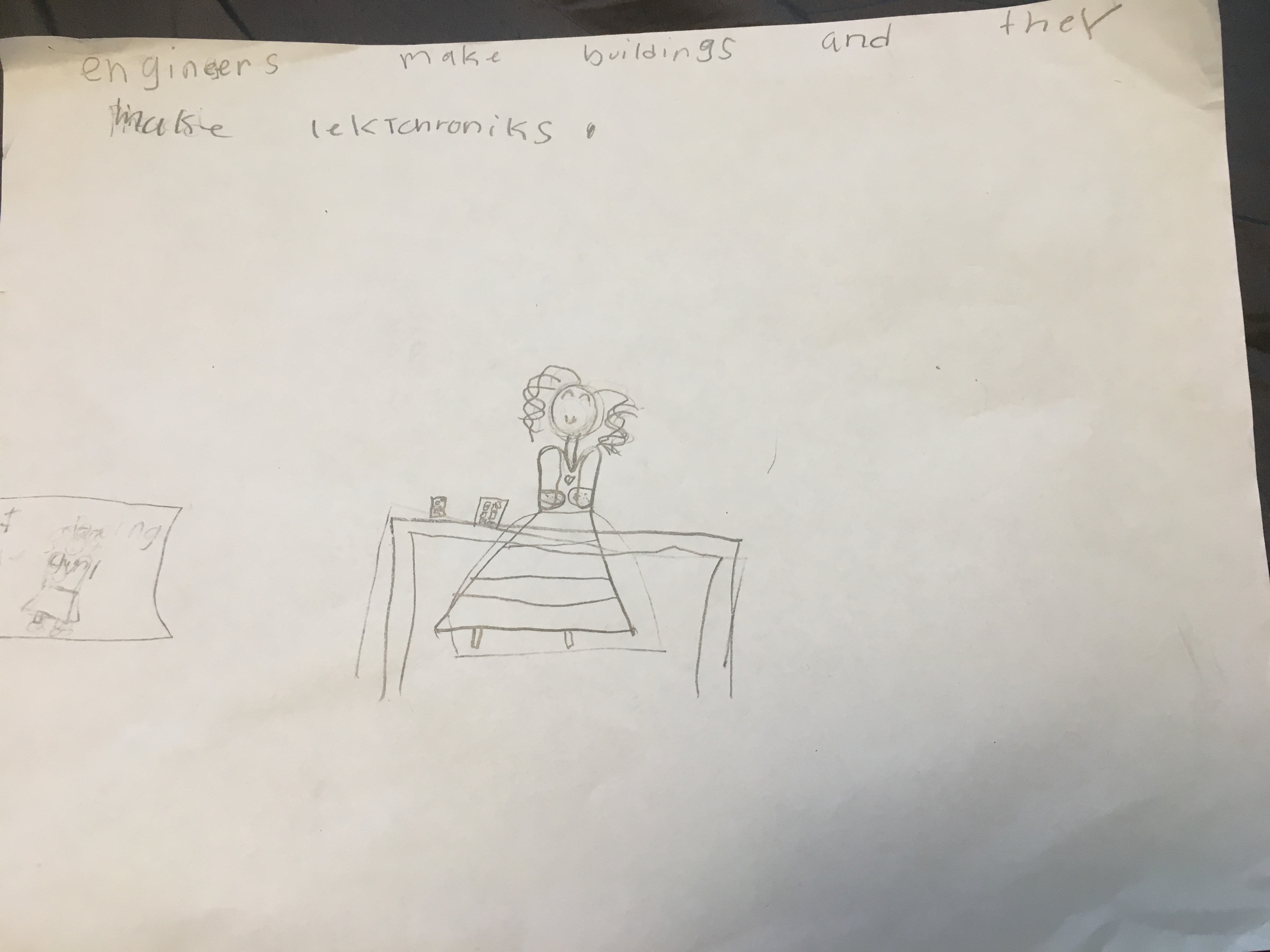Deconstructing Solids
Exploring the nature of technology and engineering in second grade
Engineering is increasingly expected in our elementary classrooms now that the Next Generation Science Standards have explicitly identified engineering disciplinary core ideas as well as engineering practices. To incorporate engineering into our elementary classrooms, we used building blocks (i.e., LEGOS) to help students begin to understand engineered products and how engineers work while engaging them in learning about the structure of matter. By integrating the science content alongside engineering content, we hope the students will better understand and apply both sets of ideas.
In the lessons described here, students are asked to make observations and construct scientifically accurate views that objects are made of smaller pieces and how those small pieces can be used to create a new object (NGSS Lead States 2013). We also incorporate the K–2 engineering standard that states students will create drawings or make models to illustrate how the shape of an object helps its function (NGSS Lead States 2013). Students learn how to work with constraints when incorporating engineering practices. To further expand on student thinking, both the nature of engineering and the nature of technology are included in the lessons.
Introductory Activity (30 Minutes)
In this whole-class activity, each student is given building blocks (10–15 pieces) that were constructed in a rectangular shape (Figure 1) and told not to touch them yet. We give each student a piece of paper and ask them to document their observations by drawing pictures and writing what they notice about their structures. After about five minutes of work time we ask, “What do you notice about your object?” We have students discuss with their shoulder partners then we come back together as a class. One student stated that their structure was different from their partner’s and used one less piece. We follow by asking, “What were other similarities or differences you noticed?” Students explain that there are different colors, shapes, and sizes of the pieces. We then ask, “How do different size building blocks come together to make the same shape?” Students typically note that some of the pieces are larger than others, so “not very many pieces are needed if the pieces are big.” The activity and discussion last about 10 minutes. After observing and discussing the structure, we move on to disassembling.
We have students individually make a new structure out of the same building blocks provided. For students with fine motor skill issues, students could use large blocks or work with partners. Students are given free range on how to make their structure as long as they use every block. We give students about five minutes to create their new structure. Students then draw a picture of their new structure. During this time, we are walking around answering any questions students have while they’re working. After a few minutes, we come back as a whole group. We ask, “Why were you able to make a different structure than the first one we provided you?” A student answered that the different pieces of building blocks were different sizes so it was easy to make a new structure when you take the pieces apart. We also ask, “How did the size of your blocks affect your new structure?” Student answers vary, but they typically note that the smaller pieces often have more options because there are more of them. Both parts of the introductory activity last about 20 minutes in total.

Teaching about the Nature of Technology and Engineering (15 minutes)
We approach teaching students about the nature of technology and engineering by asking students to think about key ideas including: what is technology, how technology shapes our thinking and actions, the nonlinear nature of engineering, and engineers’ use of models (Kruse and Wilcox 2013; Kruse et al. 2017)
What is technology?
Technology tells us how to use it
We next want to help students understand the way technologies indicate their intended function. Therefore, we ask students how building blocks work. One student shared that building blocks need to go in a specific place so they can connect; someone can count the circles to see where they connect together. Another student shared that the circles on top connect to the bottom of a different block. We push students further by asking, “How does the block technology show you how to use the blocks?” Some students note that building blocks often come with directions so we ask, “Even if you didn’t have directions, why would you know how to connect these blocks to each other?” Students note that the “pegs” on the top of one block clearly fit into the space on the bottom of another block.
To help them demonstrate this Structure and Function crosscutting concept, we ask students to draw how building blocks stay together. One student drew the bottom of the building block, showing the space cut out, and then another picture of a building block from the view of the top with arrows drawn to show how the building blocks connect. This drawing helped us understand that students can demonstrate structure/function relationships (Figure 2).

Engineering Is Not Step-by-Step
Just like the methods of science, engineering and design processes do not follow the same steps every time (Kruse et al. 2017, p. 40). We help students wrestle with this nature of engineering idea by asking, “When you made your structure, many of you used different strategies. Why do you think engineers don’t all follow the same process?” Students explain that engineers have different ideas and have to use their creativity to solve problems and that not all problems are the same.
Engineers Use Models
To further explore the nature of engineering we ask, “Today you drew pictures of building blocks and used the blocks to build different models, why might an engineer draw or use a model?” One student stated, “Because they might not know what they are making before they do it. They draw it out to see how it will look.” Another student commented, “They want to understand what they are making before they build it.” We go further by asking, “You made changes to your structure; why might an engineer make changes to their ideas?” Students discussed how an engineer might not like how their idea turned out and might change it, or there might be new requirements that require a change.
Piecing It Together (30 minutes)
In this next activity, we have students work individually. They are given the same rectangular shape as before. Again, the students are asked to create a new structure with the individual pieces. This time, however, they are given a constraint—their new creation must fit inside a plastic cup. We prompt students’ thinking by asking, “How will you construct your structure differently given the new obstacle?” We have students share ideas with their shoulder partners. Students then share with the class in a whole-group discussion so everyone can hear the different ideas. We tell students that as they disassemble their rectangular structure, they need to count each piece. Once the entire structure has been taken apart, we have each student write down the number of pieces they had in their own structure. They are then given time to build their new structure inside of the cup using all of the pieces (Figure 3).
While students are working on their task, we walk around to monitor and ask questions to get students thinking more in depth about their task. As we interact with individual students, we ask questions such as:
- What changes have you made to your structure?
- How is your design affected by the number of pieces in your structure?
- How would you explain your structure design?
- How does the cup obstacle help or hinder you as you create your structure?
At this stage, we want students to begin to understand that solids are built from smaller pieces and can be made into new objects. As noted above, we have students count the number of building block pieces in the rectangular structure as they begin to disassemble it and write it down so that they don’t forget. We do this because it helps students recognize that the same number of pieces can make varying shapes and structures—a core idea for future learning about the conservation of matter. Once the students finish building their new structure we ask, “How is your new structure different from the structure we first gave you?” Students recognize that the object is a new shape or that it is less organized. We follow by asking, “How is your new structure similar?” One student stated that the structures were made of the same materials. We then ask, “What do you notice about the number of pieces in your new structure?” Students quickly note that “The number of pieces is the same, but the shape looks different.”

Assessing Student Thinking (10 minutes)
As an assessment, we have students write down answers to the question, “How is it possible that objects of different shapes and sizes can have the same number of pieces?” We use a rubric to assess student understanding (see Supplemental Resources). To differentiate all student needs, we allow students to verbally explain and draw their responses. One student wrote, “Solids can come apart. They can connect to build new stuff.” Another student wrote, “They stick together. You can take them apart. You can build other things.” Our goal here is to have students understand that objects made up of small individual pieces can be disassembled and made into a new object.
Revisiting the Nature of Technology and Engineering (20 minutes)
On day two of our lesson, we make sure to bring up engineering practices again because students start to see themselves as engineers when they discuss how their work is similar to the work of engineers (Kelly, Cunningham, and Ricketts 2017). We bring up constraints to our students because, “Engineering is often defined as design under constraint based on physical and cultural factors” (NAE and NRC 2009). After students build their new structure with the cup constraint, we ask questions to help build student knowledge on engineering, such as, “What was difficult about this activity?” After students list some difficulties, we ask, “The difficulties you listed off are what engineers call constraints. What are some constraints you think real engineers might face when building something?” Students typically discuss ideas around space requirements and note that a building cannot be bigger than the lot on which it will sit.
As an assessment, we have students write down answers to the question, “How is it possible that objects of different shapes and sizes can have the same number of pieces?” We use a rubric to assess student understanding. To differentiate all student needs, we allow students to verbally explain and draw their responses. One student wrote, “Solids can come apart. They can connect to build new stuff.”
We assess students’ views about engineers by having them draw an engineer. Drawing allows students to share their thinking without worrying about having the right words, and students’ drawings often include more details than their writing simply because they have more practice with drawing pictures. Importantly, we use the drawing task several times throughout the school year. Early in the school year, before we have discussed engineers, many students demonstrate misconceptions. For example, one student drew a picture of an engineer fixing cars (Figure 4a). After exploring the nature of engineering in this and other lessons, students tend to draw more accurate drawings. For example, one student drew a picture of an engineer drawing a boat so she could build it (Figure 4b).

Conclusion
Integrating engineering into science lessons helps us more fully address the requirements of the NGSS. We ask students to go beyond simply acting like engineers. When we ask students explicit and reflective questions, they reflect more deeply on the processes they are practicing and the design of everyday objects.
Jordan Holub (jordan.holub@drake.edu) is a doctoral student; Jerrid Kruse (jerrid.kruse@drake.edu) is an associate professor, and Lucas Menke (lucas.menke@drake.edu) is an undergraduate student, all at Drake University in Des Moines, Iowa.
Engineering Technology Elementary


